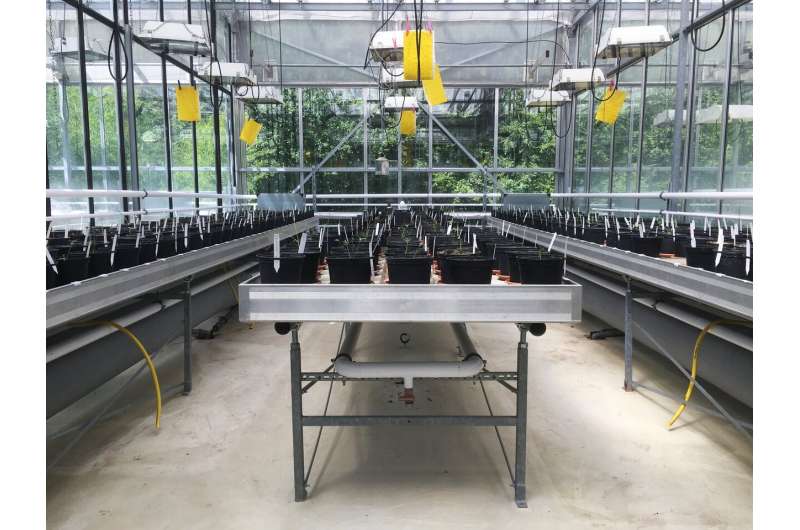Invasional meltdown in multi-species plant communities

Invasive alien plant species can pose a serious threat to native biodiversity and to human well-being. Identifying the factors that contribute to invasion success is therefore crucial. Previous studies on biological invasions have focused mainly on interactions between one alien and one native species, attributing invasion success to the superior competitive ability of the invading aliens. Very few experiments have examined them in multi-species plant communities.
A new experiment by ecologists based at the University of Konstanz and international collaborators addresses this research gap by considering competition among plants in communities composed of several plant species, both alien and native. The results, which appear in the latest issue of Nature Ecology and Evolution, pinpoint one major reason for invasion success and subsequent invasional meltdown to soil microbes, especially fungal endophytes.
Soil microbes a major driver of invasion success
"Plants compete in different ways," says Zhijie Zhang, first author on the study and a doctoral researcher in the University of Konstanz's Ecology group led by Professor Mark van Kleunen. "The most intuitive way is competition for resources such as nutrients and sunlight. But competition can also occur through other trophic levels, for instance in relation to herbivores and especially in regard to soil microbes (fungi, bacteria and other small organisms that live below ground). Our study shows that fungal endophytes, which spend at least part of their life cycle inside plants, are key to explaining invasion success."
Previous studies have revealed that plants modify the community of soil microbes as they grow, which affects both their own development and that of plants which later grow on this soil ("soil-legacy effect"). However, exactly how soil-legacy effects impact competitive outcomes between alien and native plants in multi-species communities had remained unclear. To address this issue, the researchers conceived a large, multi-species experiment consisting of two stages. First, soil was conditioned with one of six native plant species, with one of four aliens, or, as a control, without any plant. In a second step, on these soils, ten plant species (either native or alien) were grown without competition, with competition from conspecific plants, or with competition from another species, thus mimicking different competition scenarios in nature. To assess the role of microbes, the researchers further analyzed how soil-conditioning species affected the soil microbial communities and how the soil microbial communities affected later plants, taking biomass production above ground as an indication of competitive ability.
Invasional meltdown in multi-species plant communities
The study revealed several things: First, there was no evidence of superior competitive ability among the naturalized aliens if the soil they were grown on had not undergone any conditioning. In other words, aliens did not prove to be more competitive than natives in two-species communities, a finding that challenges previous theories on invasion success. Soil conditioned by aliens, however, did affect competitive outcomes between natives and aliens, with aliens producing much more biomass than native plants. "In this scenario, the aliens proved much more competitive than their native rivals, lending further credence to the invasional meltdown hypothesis," says Zhang.
This hypothesis posits that the establishment of one alien species in a non-native habitat can facilitate the invasion of other alien species in the same environment. The study by Zhang et al. pinpoints the underlying mechanism to the soil microbiome: "Our analyses reveal that the legacy effect of soil-conditioning species on later species became less negative as their microbial communities became less similar," elaborates Zhang. Aliens were observed to share fewer fungal endophytes with other aliens than with native species, which comes with a lower chance of fungal endophytes spilling over. "The idea, which is also referred to as 'novelty," is that two species that share few fungal endophytes affect each other less negatively than two species that share many endophytes," concludes Zhang. "More research needs to be carried out, but we are positive that soil microbes are crucial to invasion success and invasional meltdown in multi-species communities."
More information: Soil-microorganism-mediated invasional meltdown in plants, Nature Ecology and Evolution (2020). DOI: 10.1038/s41559-020-01311-0 , www.nature.com/articles/s41559-020-01311-0
Journal information: Nature Ecology & Evolution
Provided by University of Konstanz



















